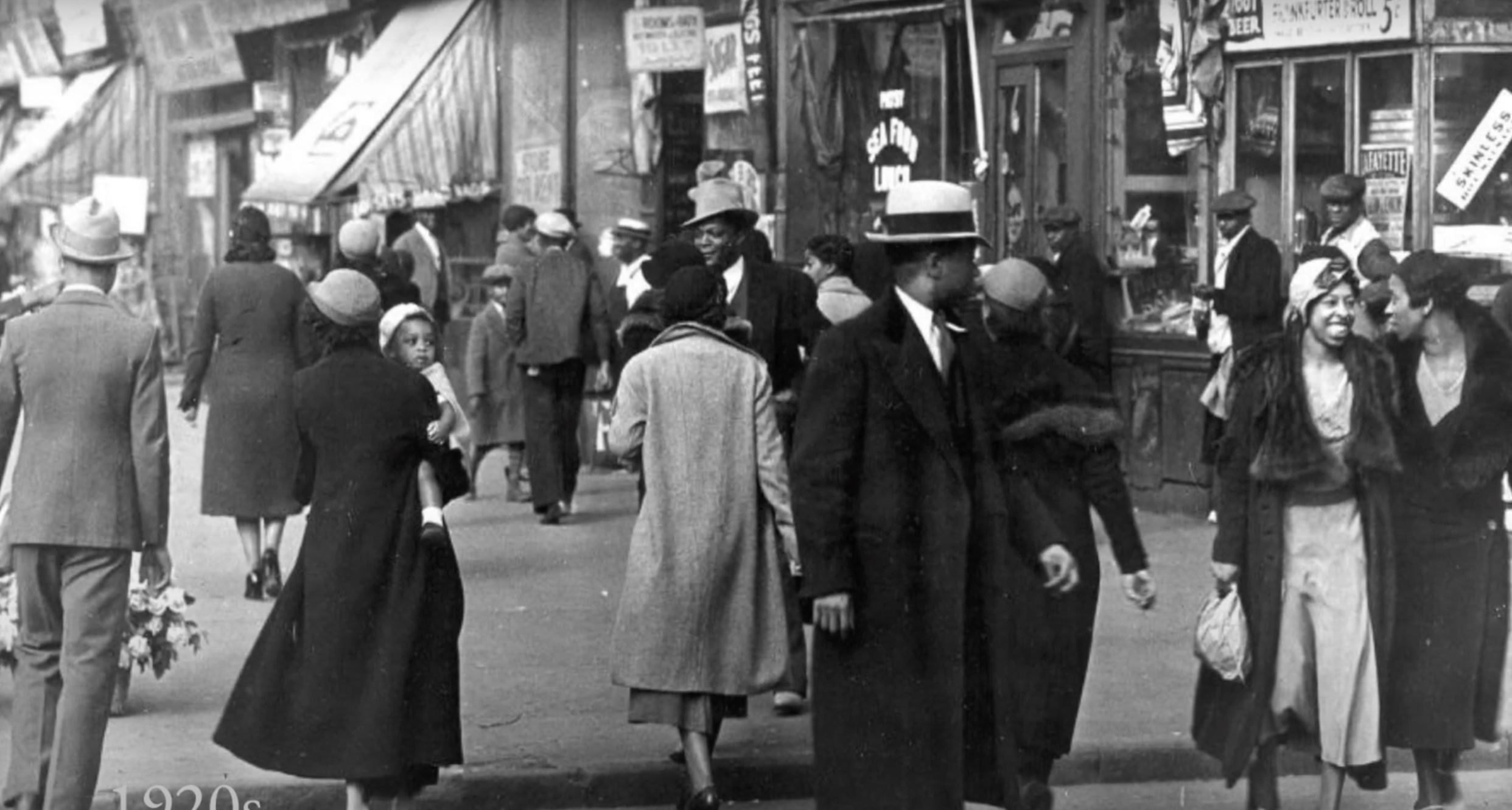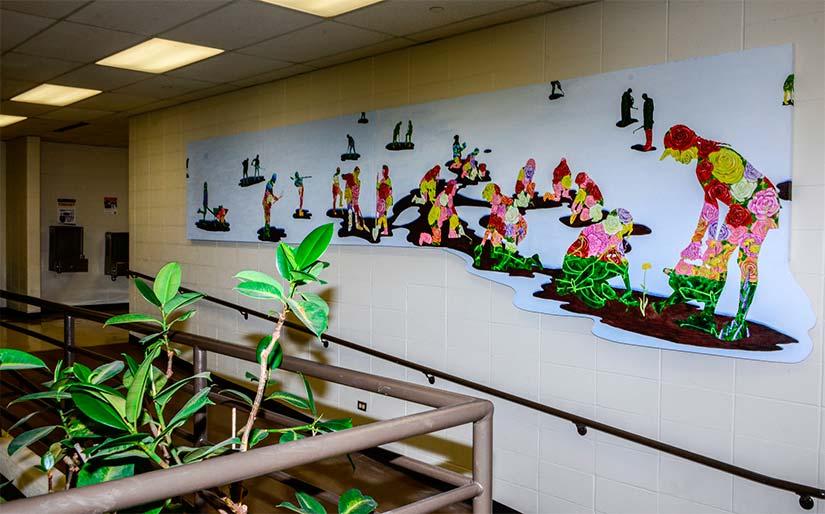



Films on race unity and human rights — shown at the urging of Baha’is — are helping to enrich interfaith discourse in the Heartland States communities of Crystal Lake, Illinois, and Willmar, Minnesota.
Laura McLuckie-Khandan, a Baha’i in Huntley, Illinois, had no sooner returned from eight years in Asia in 2015 when she was urged to join the board of a Crystal Lake-area interfaith organization called FaithBridge.
When she expressed raw anguish over the deaths of young black men at the hands of police, she was made chair of the Martin Luther King Jr. prayer breakfast committee.
For the 2016 breakfast she secured as speaker and workshop leader Phyllis Unterschuetz, a Baha’i who conducts educational programs on the eradication of racism. This year Robert C. Henderson, member of the National Spiritual Assembly, the national Baha’i governing council, spoke at the annual breakfast.
Roots of dialogue planted and nurtured
Through her association with FaithBridge, many other doors have opened for McLuckie-Khandan to serve alongside others and lend a Baha’i perspective where appropriate.
“Just having this network of people allowed many things to happen,” she reflects.
Included are screenings of the films Changing the World, One Wall at a Time, which spotlights the denial of higher education, particularly to young Baha’is in Iran; and Racial Taboo, which many communities nationwide are using to spark constructive discourse.
The roots of ongoing racial dialogue were planted by the approximately 30 people who attended Unterschuetz’s workshop.
“We developed this core group of friends, and it took about a year for us to develop the trust and the relationships that would allow us to really be able to forge those conversations together,” says McLuckie-Khandan.
When in 2017 this racial healing group decided to show Racial Taboo, FaithBridge connections paved the way for a local community college to host it. Those connections also allowed promotion of the film to reach all area faith communities, and more than 100 people attended the screening.
Many have joined subsequent dialogues. Another outcome has been an effort by the school district to train staff on racial issues, hire more administrators and teachers of color, and foster an inclusive environment.
The group also invited Craig Rothman, a Baha’i, to screen and talk about An American Story: Race Amity and the Other Tradition, a film he co-produced about unheralded efforts — beginning with the first European settlements — to bring Americans of all backgrounds together.


The Changing the World showing led to the creation of a mural based on a design by McLuckie-Khandan, whose vision for it was honed in an online course of the National Assembly-sponsored Wilmette Institute. A diverse array of artists ages 13 to 70 contributed to the mural.
McLuckie-Khandan is also in conversation with other women about developing an interfaith children’s curriculum. And FaithBridge has begun hosting discourse on topics such as the environment and gender equality.
“The whole point is that you follow your heart, right? And then it leads you to these different things,” she muses.
New diversity leads to heightened need for understanding
Such was the response in Willmar to the National Spiritual Assembly’s call for showings of An American Story: Race Amity and the Other Tradition that a Baha’i and her 2-year-old daughter braved a Minnesota snowstorm on foot to drum up interest among religious and cultural organizations.
The effort was inspired by an Oct. 9, 2018, letter of the National Assembly urging Baha’i communities to host screenings and facilitate group discussion of themes presented in the film.
“Immediately the Local Spiritual Assembly asked its newly formed Teaching Committee to assist them in responding to this request,” say Nadia Fifita and Elma Strom, and a plan was set in motion for screenings in various settings and with diverse audiences.
“Efforts to reach out to the various religious communities led to a formal invitation for the Baha’is to become members of a newly established Willmar Interfaith Network that meets monthly to discuss ways to strengthen interfaith and interracial relationships in Willmar and its neighboring communities,” Fifita and Strom relate.
At their first meeting with this group, the Baha’is met with about 12 faith leaders, representing seven faith communities in the region. All were invited to a Dec. 6 pre-screening of the film.
“Informally, there was also the opportunity for an extended conversation with the imam of the local mosque and two women from the Islamic Society of Willmar, none of whom had heard anything of the Faith before,” say Fifita and Strom.
“Immediately, one of them pulled up the bahai.org website on their browser and began reading. Their responses were universally positive, expressing a desire to learn more and to collaborate closely with the Baha’is.”
About 20 people attended the pre-screening and engaged in rich conversation about the need to further strengthen efforts toward race amity, particularly given the influx of Latino Catholics and Somali Muslims into the community.
“They spoke of how far the community has come since the days when it was frowned upon for a Catholic to marry a Lutheran and how the growing cultural diversity in Willmar should be seen as a source of strength and not a challenge to our unity,” say the Baha’is.
Further screenings were supported by several faith communities and the public library, which put books on race on display. And they gave individuals taking part opportunities to reflect on the film’s message.
“One [attendee] was a Caucasian man who served in the Vietnam War … with two Native Americans from reservations in South Dakota,” recall Fifita and Strom. “He became quite close to the two individuals and listened to many stories of prejudice and racism.
“He related that the experience of living so close and in such danger magnified his understanding of the senseless damage that bigotry and racism does to humans.”
To Fafita and Strom, “There seems to be a growing nucleus of friends — Baha’is, Muslims, Christians, Latinos, Lakota and African — committed to building a community in which race amity can grow and flourish.
“Multiple other efforts are arising, such as weekly musical devotional gatherings, an interfaith study group to explore the teachings of the Qu’ran, bilingual firesides to share the Baha’i teachings with friends from the Spanish-speaking community and many more which are sure to emerge over time.”


![]()
![]()
Whether you are exploring the Bahá'í Faith or looking to become an active member, there are various ways you can connect with our community.
Please ensure that all the Required Fields* are completed before submitting.